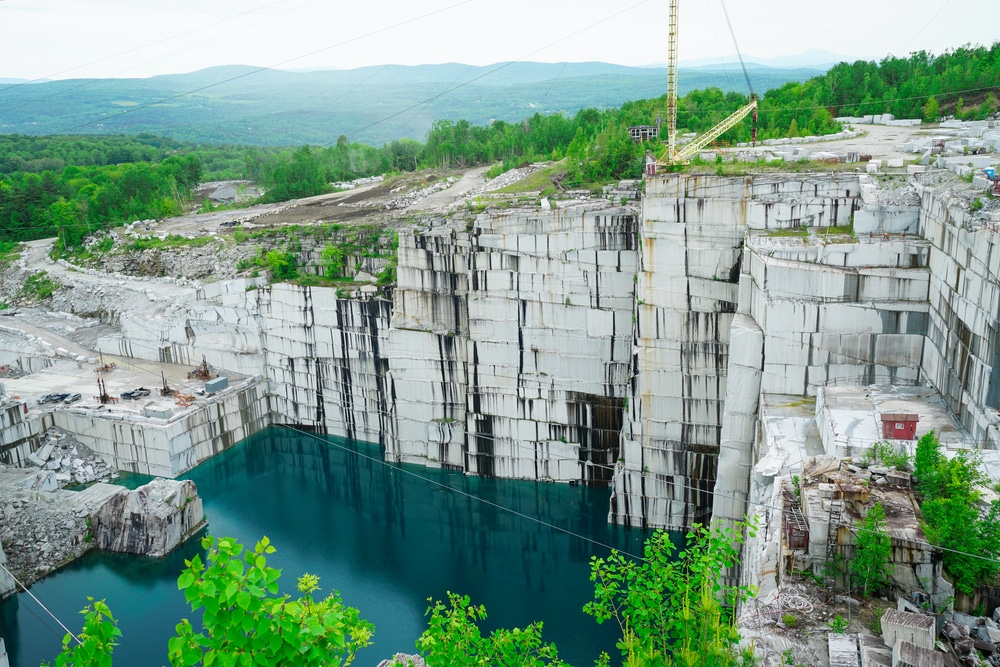Uncovering the Charm of Granite Quarry in South Africa Wonders
Uncovering the Charm of Granite Quarry in South Africa Wonders
Blog Article
Revealing the Mysteries of Granite Quarrying: Where Stamina and Elegance Meet
The world of granite quarrying is a world where the raw toughness of nature assembles with human virtuosity to produce frameworks that stand the examination of time with an air of style. From the depths of quarries to the careful sprucing up in workshops, the process of transforming granite right into building wonders is a complicated dance of custom and innovation. As we peer right into the depths of this ancient craft, we begin to discover the concealed intricacies that shape the really significance of our constructed environment.
The Beginnings of Granite Quarrying
In the annals of building history, the origins of granite quarrying are shrouded in a tapestry of ancient craftsmanship and geological wonders. Dating back to ancient Egypt and Mesopotamia, the extraction of granite from quarries marked the beginning of a journey that would ultimately cause the development of several of the globe's most legendary structures.
Granite quarrying's origins can be mapped to the knowledgeable craftsmens that recognized the rock's toughness and aesthetic allure. Through a combination of primitive tools and large decision, these early quarry workers uncovered granite blocks that would certainly come to be the foundation of human beings.
As human beings progressed, so did the strategies of quarrying granite. The Romans, renowned for their design expertise, established advanced approaches for removing granite to build monuments, holy places, and roads that stood the test of time.
The heritage of these ancient quarrying methods continues to form modern architecture, with granite continuing to be an icon of toughness and beauty in building jobs around the globe. (granite quarries in south africa)
Tools of the Quarrying Trade
The evolution of granite quarrying methods from ancient human beings to contemporary times highlights the important function played by the tools of the quarrying sell shaping the industry's techniques. In ancient times, quarrying devices were fundamental, usually being composed of chisels, hammers, and wedges made from products like bronze or iron. These tools required significant workforce and time to extract granite blocks from quarries.

In addition, the intro of pneumatic devices and high-powered machinery has actually significantly minimized the physical labor needed in quarrying procedures, boosting employee security and performance. As the quarrying market remains to innovate, the tools of the profession stay at the leading edge of driving progression and forming the future of granite removal.
Removing Blocks of Granite
Utilizing precision equipment and progressed methods, the removal of granite obstructs from quarries has this hyperlink actually ended up being an advanced procedure in the modern quarrying sector. The preliminary step involves identifying the place and size of the granite down payment to establish one of the most efficient extraction approach. When a suitable site is chosen, the removal process starts with the exploration of holes for the placement of dynamites. Recommended Site Controlled blasting strategies are then employed to break apart the granite right into convenient sections.

Polishing and Ending Up Methods
To achieve a remarkable surface on granite blocks, experienced artisans use a series of precise polishing and finishing techniques. After the preliminary extraction and forming processes, the granite blocks go through a comprehensive polishing phase to improve their natural appeal and longevity.
In addition read this post here to sprucing up, finishing methods are used to additional improve the granite's appearance. These techniques might consist of flaming, sharpening, or brushing, each offering distinct structures and coatings to fit different aesthetic preferences. Flaming, as an example, includes revealing the granite surface area to heats to develop a rough, distinctive surface, perfect for outside applications where slip-resistance is vital. Honing, on the various other hand, gives a matte surface that is smooth to the touch, excellent for indoor kitchen counters and floor covering. By carefully picking and applying these polishing and completing strategies, artisans can change raw granite blocks right into exquisite items that display both strength and sophistication.

Environmental Impact and Sustainability
With the growing focus on environmental consciousness in the industry, granite quarrying methods are significantly scrutinized for their impact on natural resources and lasting sustainability. Furthermore, the transportation of granite from quarries to processing centers generates carbon discharges, even more contributing to ecological destruction.
To reduce these influences and ensure sustainability in granite quarrying, industry stakeholders are adopting various measures. Executing sophisticated innovations to decrease power usage and water usage, reclaiming quarried land for eco-friendly reconstruction, and promoting responsible sourcing practices are some methods being used. Qualifications such as the Woodland Stewardship Council (FSC) and the Management in Energy and Environmental Design (LEED) aid consumers determine environmentally friendly granite items.
Verdict
In verdict, granite quarrying is a process that calls for specialized tools and strategies to extract blocks of granite and polish them to a high degree of surface. While the ecological effect of quarrying can be substantial, initiatives are being made to boost sustainability practices in the sector. On the whole, granite quarrying is a delicate equilibrium in between utilizing the strength and sophistication of this natural rock while minimizing its effect on the environment.
Report this page